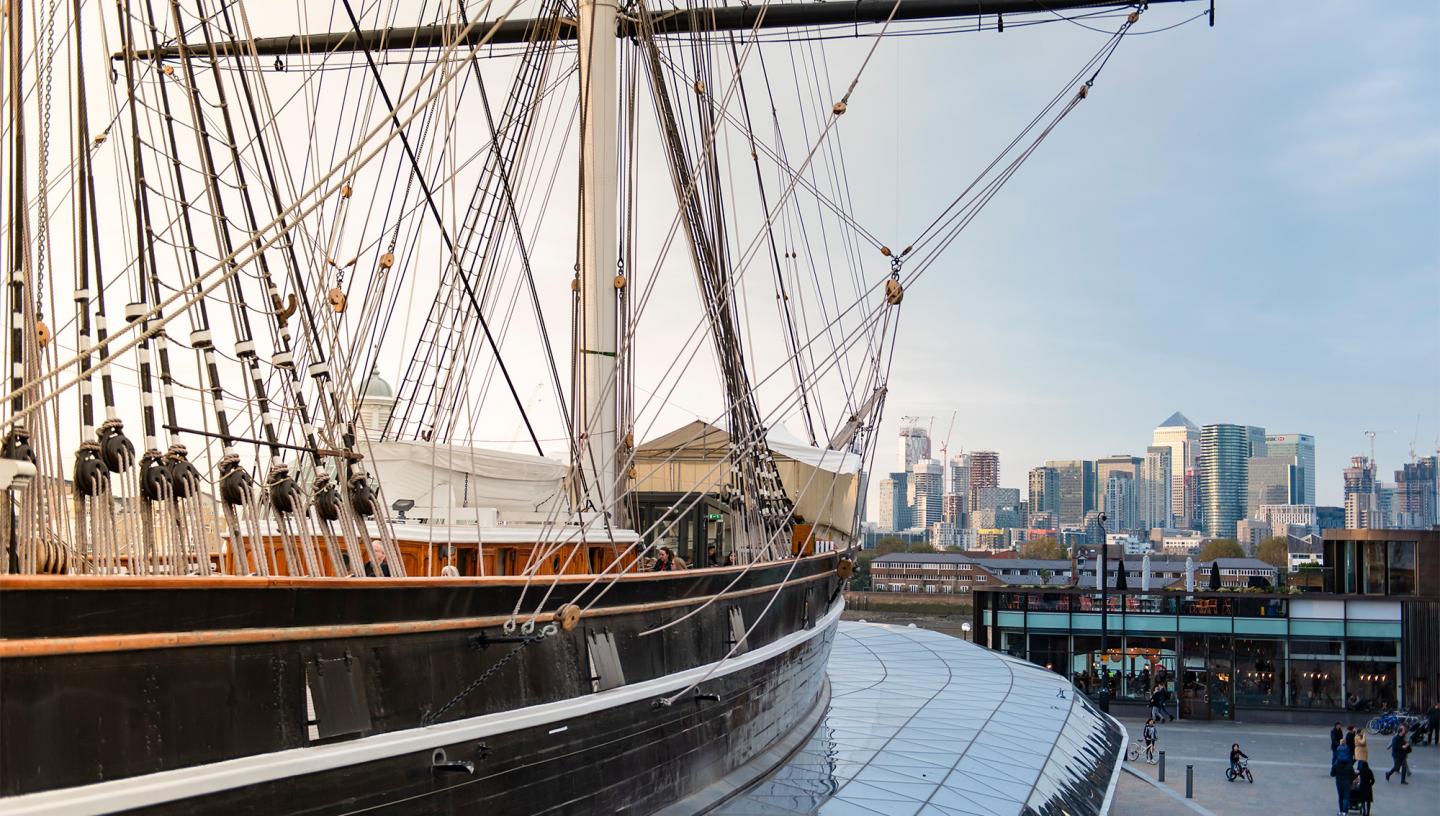
Cutty Sark was famous for being a very fast ship. Although she was only powered by wind in her sails, she even sailed faster than steam powered ships.
Today, scientists work with engineers and designers to design fast boats and ships. They experiment with new ideas by building models and testing them in huge water tanks.
Can you design the fastest wind-powered ship? Experiment with your ideas in teams or on your own and test your tiny model ships by racing against each other.
You will need
- Container filled with water (a sink, bath or washing-up bowl)
- Towel
- Watch or a phone with a timer
- Scissors
- Tape
- Paper
- Pencil
- Fan, book, or paper to make wind with
- Ruler or tape measure
- Materials you can find at home (see step one)
This activity was designed by Rosie Fuller

Step One
Collect model ship building materials from around your home. You can use anything you like, but remember you will be testing your model in water. For example, you might want to use: clean packaging, toothpicks, straws, elastic bands, sandwich bag ties, foil, paper, tape, blutack, stapler. Tip: if using paper, colour it with wax crayons to make it waterproof.

Step Two
Agree what size everyone’s ships will be. We suggest 10cm long, but go bigger if that’s too fiddly.
Experiment with your materials to figure out a way of making a model ship that will float without letting in water, and that can be pushed along by wind only (not your hand!).
You will probably need to add sails to catch the wind and a mast to hold the sails up – but their shape and size, and how many you add, is up to you.
Think about how to balance your ship, so that it doesn’t tip over and let water in. You can do this by changing the height of your mast, or by adding weights.
Give each ship you make a name.

Step Three
When you’re ready to race your model ships, set up your test tank.
Find your timer or watch. Fill your tank (bath, sink or container) with water. Use a bit of tape to mark your start and finish line on either end of the tank. Have a towel ready for drips.
Setting up a race is like setting up a scientific experiment – it is important to make sure that it is fair. Make sure you use the same thing to make wind to blow the ships along (for example flapping a fan, a book or paper) for each ship, and ideally have the same person blowing the ships each time.
Make sure each ship starts on the start line. The timekeeper – the person holding the timer – should watch the finish line. As soon as the wind starts blowing your ship, shout “go” so the timekeeper knows to start the timer.

Step Four
Test your ships one at a time. Write down the time it takes each ship to sail from the start to the finish line, along with its name, so you know which was the fastest after all the ships have raced.

Step Five
When Cutty Sark raced other ships, such as the Britannia and Thermopylae, it hit the news headlines. Update us with your race news by sharing your results or pictures of your tiny ships on Twitter, Instagram or Facebook